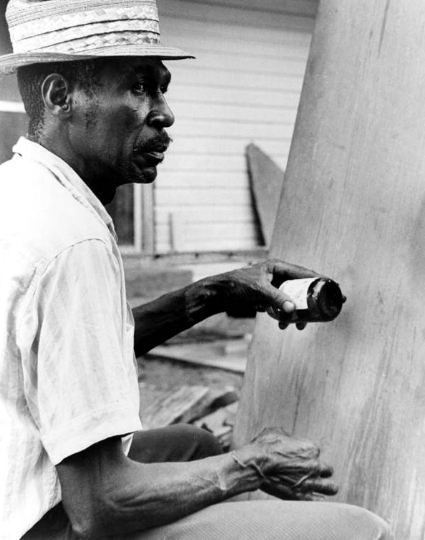The diddley bow is a primitive one-stringed guitar that influences the development of the blues music genre.It is also known as one-string, jitterbug, or monochord zither.This instrument was also considered as a starter or practice instrument in the Southern part of America, mostly in the African-American community.Nevertheless, professional musicians nowadays use the diddley bow in solo and as an accompaniment instrument.
Historically, the diddley bow comes from the instruments that were used in West Africa. It was an instrument that was initially developed as a children’s toy made by the slaves in the United States.In there, it was often played by children and was beat using a stick. In changing its pitch, children usually move the slide up and down. Ironically, although the researchers initially documented this instrument in the rural South during the 1930s, it is rarely heard now in that place.
Typically, the diddley bow was homemade. Diddley bow makers usually crafted this instrument out of a wooden board and a single wire that is stretched between two screws. This single string was played through plucking or with a stickand can have a variation of the pitch using a glass or metal slider held in one hand. In addition, a glass bottle is usually used as the bridge that helps to amplify the sound of the instrument.
According to the master of the diddley bow, Eddie “One String” Jones, this instrument’s rhythm dramatically improved if the strings are lightly damp using a free hand. Although this may seem easy, playing the didley bow takes time to master. He also added that experimenting with different rhythmic feels through damping the strings would take you to a new level of playing the didley bow. Aside from plucking the string with one hand, the other hand must also practice sliding the string using a bottle as a slider.
In short, in playing the diddley bow, a player usually uses both of his hands. In fact, on Eddie Jones’ recording, he also had mentioned that he played the diddley bow, often alternating with the notes played up by the strings and the notes created by the slider. As well as that, Jones also mentioned that the single string of the diddley bow does two things. The first is that it serves as the reference tone, or what others sometimes refer to as the pedal tone. The second is that the notes created by the slider serve as the melodic riffs. With this in mind, one can conclude that the diddley bow is truly an amazing instrument. Thus, as easy as it may seem, it really takes time to master this instrument. Furthermore, he also added that one of the wonderful things about this is that there are no rules but plenty of opportunities to explore several playing techniques.
Also, it has been notably played by several musicians like the Mississippi blues musician Lonnie Pitchford. In fact, he then demonstrated the diddley bow in the front of his porch at home by stretching two nails that are hammered in a wood placed in a vertical beam. When Pitchford died, his family requested to placed a playable diddley bow on the side of his headstone.
Other than Lonnie Pitchford, famous traditional musicians like Glen Faulkner, Compton James, Lewis Dotson, Jessie Mae Hemphill, James ‘Super Chickan’ Johnson, and Eddie ‘One String’ Jones are also knownas players of the diddley bow. Additionally, another diddley bow player named Willie Joe Duncan became famous for his electrified diddley bow, which he called ‘Unitar.’
Because of the popularity of the diddley bow, it was also associated with bands like The Funk Brothers.This instrument was also featured in Seasick Steve’s ‘Diddley Bo’ song from his ‘Man from Another Time’ 2009 album. Moreover,Jack Anthony White from the duo, The White Stripes, had performed using the diddley bow in the movie ‘It Might Get Loud.’ Aside from that, the diddley bow also appeared in Alan Lomax’s film series, “The Land Where the Blues Began.” This 1990 American Patchwork series was produced, written, and directed by Lomax himself. It tackles folklore, dance, culture, as well as music.

